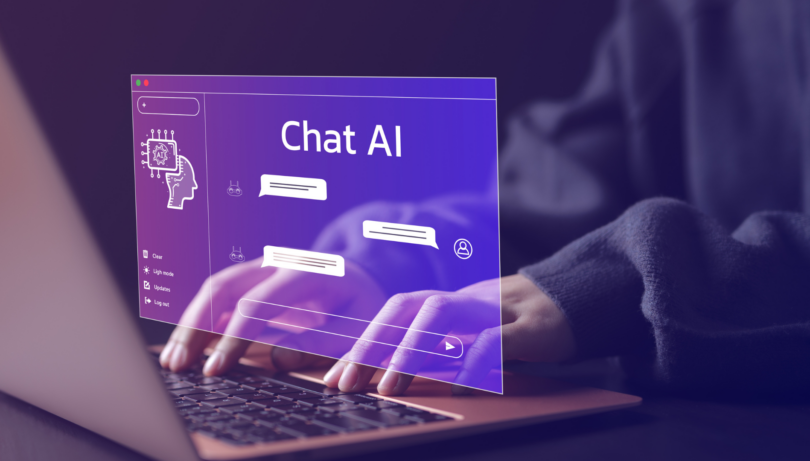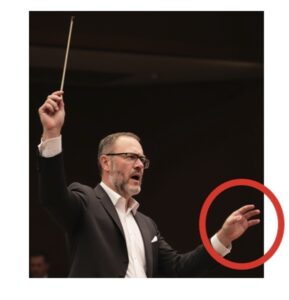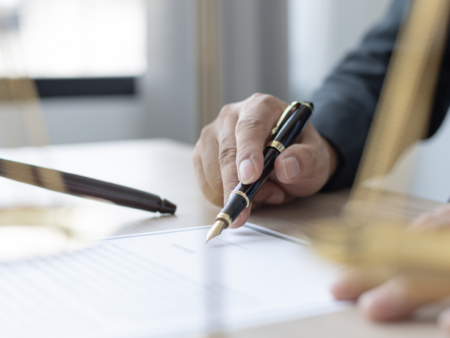Don’t Believe Your Eyes: Evidence in the World of AI

A few years ago, I got the opportunity to visit the Pyramids of Giza, a truly impressive sight to behold in person. Here’s me in front of these ancient wonders:

When I think back, I’m reminded not only how incredible the Pyramids are, but also how incredible AI has become. Why AI? Oh, because I’ve never actually been to the Pyramids of Giza – never stood there in front of them, never worn that blue shirt or those khaki pants. None of the above picture is real (not even me).
Now before you accuse me of “orchestrating” that entire intro just to get your attention, let me assure you that my efforts to “conduct” this fabrication are purely professional:

Ok, that’s not real either. Sorry. If you think I’m “walking a fine line” in taking this too far, I tend to agree:

Alright, I’ll stop. If you’ve read this far, I suppose you deserve that courtesy.
My point in sending these believable—but entirely fake—photos is simply this: we are entering into a brave new world with AI. One in which you can no longer trust as real what you see in pictures. All it takes is a few photos of your face (perhaps found on social media, etc.), some skilled use at text prompts in an AI program, and suddenly “you” are in a picture doing something, somewhere that you never actually did.
Imagine the implications this will have on evidence used in court – for every picture that is considered crucial evidence of some pivotal fact, we’ll now have to first ask, “is this a real picture, or is it entirely fabricated?” That’s a radical departure from how most courts—and most people generally—treat photographic evidence.
And this is not just limited to photographs. Entire videos are now able to be generated from a few simple text prompts. If you have 10 minutes, watch this video posted by a popular YouTuber back some months ago (AI Generated Videos Just Changed Forever (youtube.com)). The rate at which this technology is improving is incredible, if not a bit scary.
Does that mean the technology is foolproof? No, in fact if you look carefully at my above photos, you’ll see some abnormalities. For instance, don’t ask orchestra-conductor-me to give you a “high five” with my left hand:

Also, in that same picture, I’m pretty sure that at least three of the other people in my orchestra are some variation of myself (I’m pretty good at recognizing the back of my own head):

But these abnormalities will be less and less as AI improves, likely to the point that it will become impossible to tell if a picture is real or fake. In that case, much like a questionable email or Word document, we’ll be left looking at things like the metadata and surrounding circumstances of the photo to see if can be trusted as genuine.
So, the moral of the story is this – savor your last remaining days of trusting what your eyes see in pictures and videos. Soon we’ll be questioning everything that we don’t witness in-person.
By the way, I have to give a big thanks to my brother, Jordan, for helping me create the above pictures using AI. If anyone is interested in how to do this, you’ll have to catch Jordan when he’s not fighting bulls in Spain:

Yeah, not real either…
This information is made available by Stibbs & Co., P.C. for informational purposes only, does not constitute legal advice, and is not a substitute for legal advice from qualified counsel. The laws of other states and nations may be entirely different from what is described. Your use of this information does not create an attorney-client relationship between you and Stibbs & Co., P.C. This material may be considered attorney advertising in some jurisdictions. The facts and results of each case will vary, and no particular result can be guaranteed.




